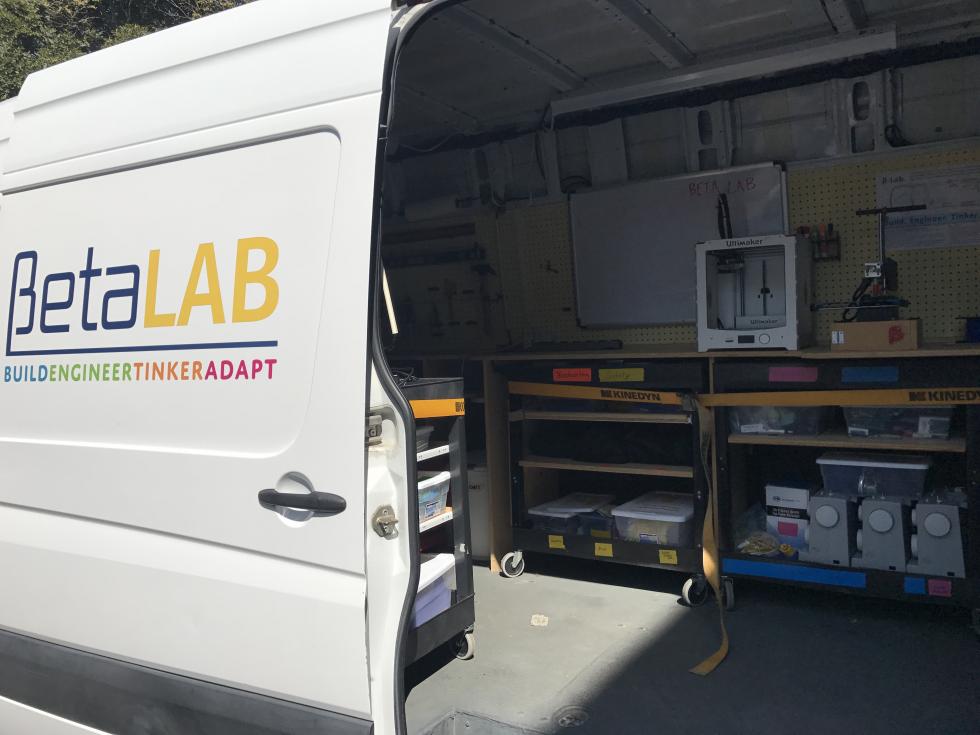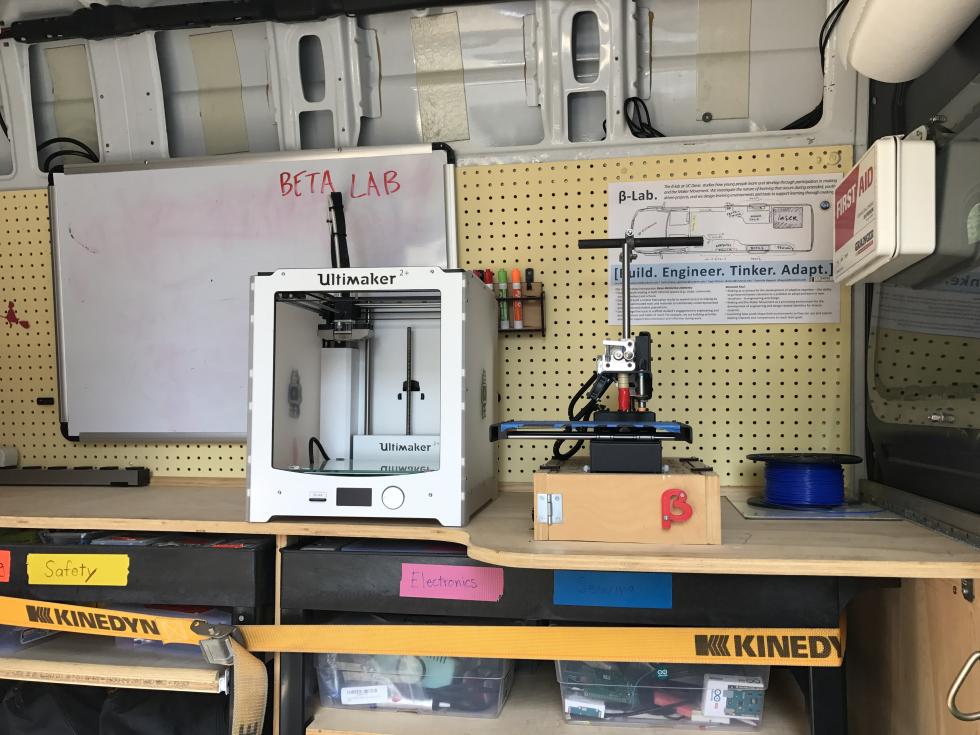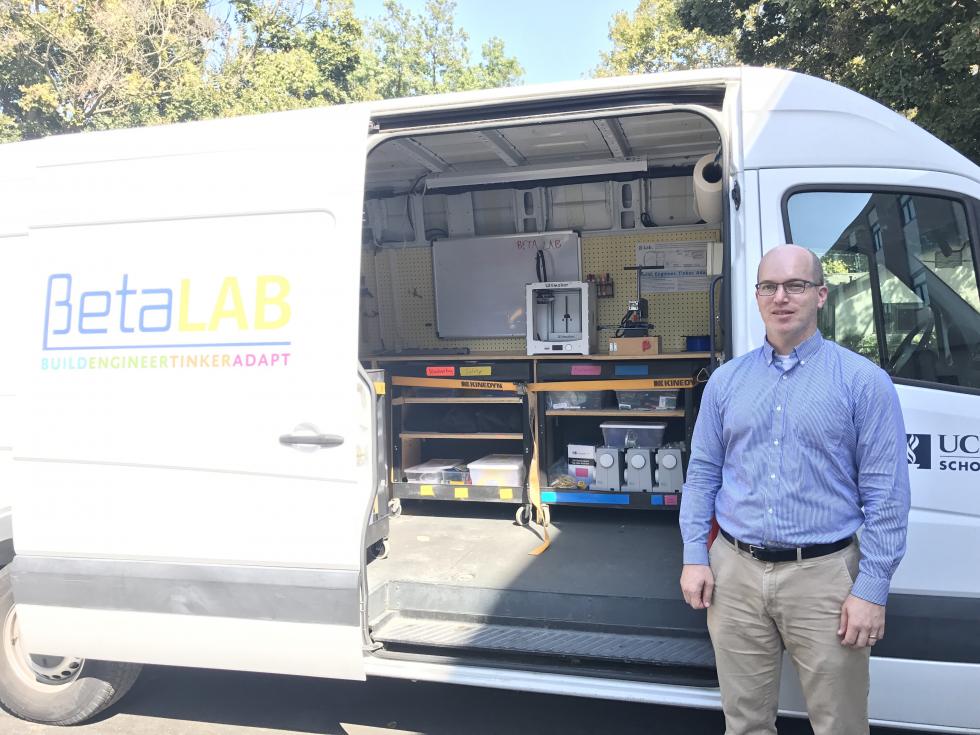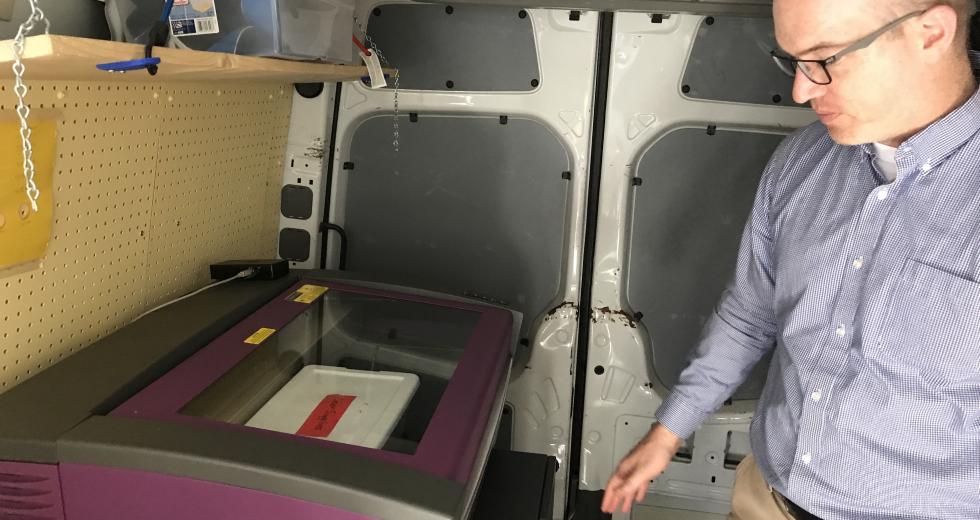There is a Dodge Sprinter often parked outside Voorhies Hall at UC Davis, not far from the School of Education Building. It’s nondescript and white, and most students probably walk past without a thought. Inside this vehicle, however, are about a half dozen rolling carts filled with materials to teach electronics, woodworking and other disciplines, all of which involve using one’s hands.
A Dodge Sprinter serves as the mobile workshop. Photos by Zack
Quaintance

The Sprinter is a mobile workshop, one researchers at Davis have used since 2015 to study an increasingly popular trend in K-12 education called the Maker Movement. Dr. Lee Martin, an associate professor in education, leads the effort, dubbed the Beta Lab, for Build Engineer Tinker Adapt. The Sprinter is the Beta Lab’s mobile maker studio.
Within the educational context, the Maker Movement is, simply put, an initiative that engages students through projects they like — sewing for fashion, building a prototype for a remote control car, using a 3-D printer — before subsequently integrating traditional academic learning. For example, a student does some woodworking and then writes a paper about what they built.
“The Maker Movement means a lot of different things to a lot of different people,” Martin says, noting that definitions vary by university.
The Beta Lab’s mobile maker studio includes 3D printers. Photos
by Zack Quaintance

What everyone in the field agrees upon, however, is this is a rising trend, one with roots in bygone classes like woodshop, which have largely been cut from curriculums. Maker Movement is more than a return to the old. It also involves newer technology that has become more accessible.
Martin is conducting his research with a team of two graduate students and a half-dozen rotating undergrads. Sagit Bester, one of the grad students, has a background in research and development with a private company in the tech sector, and Bester remembers that a decade or so ago, a microcontroller — which is part of the mobile maker studio — was pricy equipment that only highly-qualified engineers used. Now, students can tinker with it in school.
The mobile space gives Davis’ Beta Lab a chance to study how students learn by bringing them such equipment, which students use to practice and hone new skill sets, developing a greater interest in learning as they go, Martin says. Right now the Beta Lab works with high school students at a public charter school in Sacramento, which they can’t name because of a confidentially agreement associated with their research. One of the advantages of mobility is the Beta Lab can bring equipment to schools that might not otherwise have such resources.
Dr. Lee Martin oversees the Beta Lab, which stands for Build
Engineer Tinker Adapt. Photos by Zack Quaintance

A typical visit to a campus involves the team unloading carts and letting kids use the materials, either in the Sprinter or in the school. Everything is moderate in size, if not small, because the point is to record research, not to incorporate as many students as possible, although Martin says their data could eventually result in a system that educators will scale to size. This mobile concept is based on a similar project that originated at Stanford University called the SparkTruck.
For Martin and his team to construct their own version, the first step was getting a vehicle. The Sprinter was given to them by UC Davis, which used it to haul livestock for one of the university’s agriculture programs. The vehicle even had a lift on the back, previously used to load cattle, that’s now employed to lift the Beta Lab’s equipment carts.
Martin and his team had to do some making of their own to refurbish it, remembers Colin Dixon, another grad student working with Martin. Quite a bit of brainstorming and design took place, before they physically cleared out the Sprinter and installed the equipment it carries today.
“With each step, new constraints and opportunities came in, and we just kept creating, kept designing,” Dixon says.
The team is optimistic its research will prove valuable as more school districts across the country embrace this sort of hands-on learning.
“It’s this way of learning that goes back through human history,” Dixon says. “These ways of learning have always been central to young people becoming adults, and I think that’s an important thing to recognize. It happens, not just in schools, but it happens across all different communities in all different places. That’s one of the things that’s so powerful about it.”



